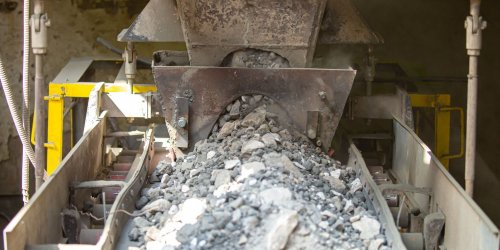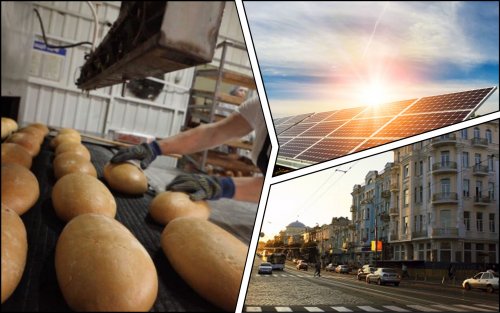The greenhouse gas emissions trading system (ETS) has been operating in the European Union since 2005. It is based on the emissions trading directive 2003/87/EC and operates on the cap-and-trade principle. This means: the more the enterprise reduces emissions, the more it will earn. How it works and why the ETS system is not the same as an emissions tax and how it benefits polluters are in the material of EcoPolitic.
How countries limit carbon emissions
Probably, each of us has repeatedly heard that large-scale emissions of greenhouse gases into the atmosphere cause an increase in air temperature and lead to global warming. In recent decades, this issue has become the main issue at international climate platforms, so world organizations and individual countries were forced to respond to it. Such a reaction is, in particular, the collection of fees for emissions.
In general, there are two most common forms of such charges in the world: tax and quotas for greenhouse gas emissions. An emissions tax is a certain amount that enterprises pay for each ton of CO2-equivalent greenhouse gases emitted.
Certificate: CO2 – is not the only greenhouse gas whose emissions are limited, but it is the most common, therefore, for ease of calculation, its equivalent is used, and restrictions on greenhouse gas emissions are called carbon emissions restrictions.
Each country sets the amount of tax at its own discretion. In Ukraine, it is UAH 10 per ton of CO2.
With the carbon tax, the situation is simple: the more emissions a company creates, the more it will pay. If the polluter wants to pay less, he invests in green technologies to produce less carbon.
But there is another system of restrictions in the world – the trading of quotas for greenhouse gas emissions. However, from the beginning, companies get the opportunity to create emissions absolutely free!
What is the quota trading system
From the beginning, the system of trading quotas for greenhouse gas emissions provides for the distribution of emission limits among polluters. Key polluting enterprises receive a certain limit of emissions from the state for free, which they can carry out in a year – a specified quota. One permit allows you to emit 1 ton of CO2. If the enterprise, for example, received 100 permits, this means that it can throw away 100 tons per year. At the end of the year, emissions are calculated, and if the enterprise has made more than what was determined for it, for example, 120 tons, it must buy additional permits at auctions or on the secondary market, or pay a fine for excess emissions. Proceeds from the sale of quotas at auctions go to the Innovation Fund and the Modernization Fund, which finance emission reduction projects.
Currently, the quota trading system is actively operating in the EU countries, China, the USA, Great Britain, Switzerland, South Korea, Mexico, New Zealand, and Montenegro. Similar ones are also being developed in Colombia, Turkey, Vietnam, Indonesia and Japan.
Ideally, the quota granted to the enterprise should cover only part of its emissions. In order not to pay extra money, the company must modernize production and emit less. For this, it can seek help from specialized funds, or implement projects independently. Each year, the quota should be further cut to further stimulate polluters to make their production green. The same person who modernized the enterprise successfully and has extra quotas can sell these leftovers on the secondary market and earn extra.
Everything looks good in theory, but in practice the quota system has turned from a limiter into a fiction. Often key polluters receive far more permits than they emit. And the cost of quotas is not at all stimulating for them.
How the quota trading system works in the EU
The European Emissions Trading System (EU-ETS) is the world's first international system of trading quotas for carbon dioxide emissions. It covers 30 countries (in addition to the 27 EU countries, Iceland, Liechtenstein, Norway) and about 12,000 enterprises (approximately 40% of greenhouse gas emissions in the EU).
The EU-ETS covers four sectors: energy (thermal power plants with a capacity of more than 20 MW, oil refineries and coke ovens); production and processing of ferrous metals; extractive industry (in particular, production of cement, bricks, glass and ceramics); pulp and paper industry.
First, the European Commission distributes possible emissions among countries for the coming year, and only then do countries share limits among polluting enterprises.
Some of the EU countries also have their own national quota trading systems. For example, outside the EU-ETS mechanism, Austria allocates quotas for emissions from fossil fuel extraction, and Germany – for the use of fuel for heating and transport.
The emissions of key polluting enterprises in the EU are simply colossal. For example, the world's largest chemical company, Germany's BASF, produced 20.2 million tons of CO2 equivalent in 2021.
As for the value of the quotas, at the beginning of 2021 they were estimated at a little more than 38 euros per ton of carbon. And already in 2022, they reached record values of more than 90 euros per metric ton of CO2. The highest price for carbon emissions so far was recorded on February 21, 2023 at the level of 100.34 euros. Fines for exceeding emissions, by the way, are also not small – 100 euros per ton.
But here it is important to understand that the cost of quotas, even at 38 euros per ton, does not mean that the company, which threw away 20 million tons of carbon, will pay 760 million euros. It can pay nothing and even earn extra money if its emission allowance is greater than its pollution volume. In practice, this happens quite often.
Polluters in the EU may not pay for emissions
After the introduction of the quota trading system in the EU, for the first 15 years (until 2020), there was a transition period during which there was almost no fiscal burden on enterprises. The GMK Center analyzed the effectiveness of the European system of emission quotas using the example of steel producers and found that in 2020, 18 of the 22 largest steel plants in the EU had surplus quotas. For example, at ArcelorMittal Krakow (Poland), quotas covered 799% of its emissions. In ArcelorMittal Dobrowa Gornica (Poland) – 383%, Thyssenkrupp Duisburg (Germany) – 217%, ISD Dunaferr (Hungary) – 204%.
As a result, these companies could not only pay nothing for their emissions, but also earn tens or hundreds of millions of euros by selling excess allowances. For example, in the case of Thyssenkrupp Duisburg, the company could receive 257 million euros for its excess permits.
From 2021, the grace period began to shrink somewhat, but not radically. According to the new rules, free quotas cannot exceed the volume of actual emissions by more than 15%. But in practice, this means that a significant number of companies can continue to pay nothing for emissions. The EU plans to completely abandon free quotas only by 2034.
The quota trading system is not very stimulating for polluters not only in the EU. The situation is similar in other countries.
How South Korea's carbon emissions trading works
The Korean Emissions Trading Scheme (K-ETS) launched in 2015 and became the first nationwide mandatory ETS in East Asia. It covers about 74% of South Korea's national greenhouse gas emissions. K-ETS covers the country's 684 largest emitters in the energy, industry, construction, waste, transport and domestic aviation sectors.
90% of the quotas here are distributed by the state for free, only 10% of the permits must be auctioned.
As in the EU, a large number of companies can get 100% free coverage of their emissions. Average quota auction price: 23,243 South Korean won ($17.99) per metric ton. Aftermarket price: 20,633 won ($15.97).
Trading quotas in China
China's national emissions trading system only went into effect in 2021, but it currently covers the world's largest CO2 emissions: more than 4 billion tons.
At the same time, the Chinese ETS applies only to the energy sector of this country and regulates the activities of more than 2,000 companies, including the combined production of heat and electricity, as well as its own power plants in other sectors.
Quotas are only distributed free of charge. If the company wants to purchase additional allowances, their price on the secondary market is even more democratic than in South Korea – only 55.30 Chinese yuan ($8.20) per metric ton of emissions.
Does the US emissions trading system work?
The United States does not have a single, centralized system for trading emissions quotas. Each state independently decides on its introduction and establishes rules.
The state of Massachusetts was the first to introduce such a system in 2018. Most likely, they managed to create the most efficient quota trading system in the world, because 100% of these quotas are distributed at auctions. No free permissions. However, this state limits emissions only from electric generators, and their average cost varies from $9.75 in the December 2021 auction to $0.5 in the March 2022 auction. That being said, the system is unlikely to have a significant impact on the state's total emissions.
From 2021, the trading of quotas started working in California as well. In this state, the system is more similar to the traditional ETS and covers the fields of transport, construction, industry and energy. Quotas are issued both free of charge and sold at auctions. In 2022, a system similar to California was introduced in Oregon, and in 2023 – in the state of Washington.





